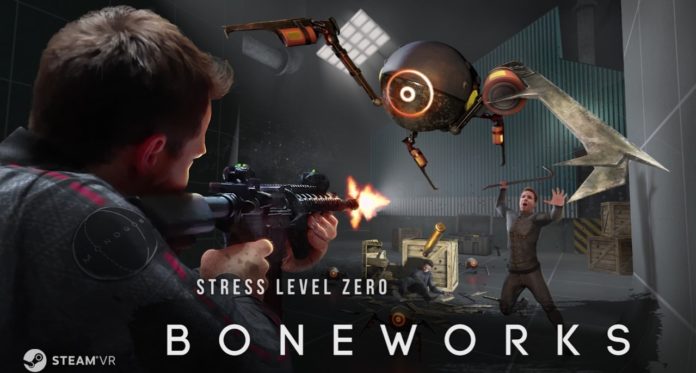The joints in my fingers angrily insist I drop the stuffed monkey I have been tightly clutching for fifteen minutes. I cannot. It is protecting me. Grasping it tighter, I scan the room for the tenth time. The door across from me is open just a crack, but the gap is wide enough to allow entry to both an ominous red light and an auditory mix of strange breathing and muffled movement. The symphony—whose source remains unseen—ignites in me a sort of anti-progression panic and I squat to the floor, backing myself into the nearest corner. My curiosity is instantly replaced with anxiety despite the fact that I’m not even certain I’m in any actual danger.
In my other hand, I hold a key; however, I have zero idea what it opens or if it opens anything at all. It could just as easily close and lock something, start something, stop something, or be a part of something else. I’m confused, lost, alone, and afraid… and it isn’t the first time I’ve felt this emotional cocktail since starting the new, highly anticipated, experimental physics VR adventure from Stress Level Zero. In fact, the more I play Boneworks the less certain I am that my brain works.
Boneworks is a narrative VR action-adventure puzzle game with a sharp focus on providing a rich and consistent physics experience, arguably the most comprehensive seen in the gaming virtual space to date. Universal rule and robust body systems built from the ground up empower players to explore, fight, sneak, and solve puzzles in endlessly creative ways. Use everything you find to defeat enemies and traverse dangerous landscapes as you delve deeper into the Monogon Industries’ artificial intelligence OS, Myth OS.
Preparation
Make sure you’re at peak mental acuity before attempting Boneworks, maybe even do a few levels of Sudoku to get your brain warmed up. It is a puzzle game at heart, with levels having seemingly infinite ways to reach the ending. Utilize the environment (think climbing, jumping, swinging from pipes, planks, ropes, and so on) along with a plethora of cool objects you find (axes, sledgehammers, bricks, swords, automatic weapons, imaginary physics weapons) to engage in combat and to create your own solutions to sometimes complex problems in order to progress.
You also want to ensure you have at least an hour to dedicate to being in the headset before starting. Although a single-player game you can quit out of should something come up, it’s also impossible to save your game outside of completing sometimes lengthy levels. My time spent exploring, smashing boxes, and taking the road less traveled slowed markedly as I progressed through the game for two reasons. One: exploring for too long increased the risk I’d have to quit before reaching save screen salvation. Two: most boxes were empty or contained redundant inventory I had no pressing need for.
Another consideration is how experienced you are with VR and whether or not you get motion sickness in any other virtual game. If so, start building out your VR legs now. If you take on this title before your inner ear is ready, you’re going to be racing against a ticking time bomb of vomit to complete every level. Boneworks is admittedly not for those new to VR and even has the following warning tacked to the bottom of their Steam page:
“WARNING: Boneworks operates with the assumption that you’re comfortable with VR experiences that push the limits of comfort and nausea. You must walk using a joystick, as the game doesn’t offer any “teleportation” options for comfort’s sake. You must press a button to virtually “jump,” and your virtual perspective will fling and fall great distances throughout the game. And you must press against firm virtual objects, which will thus “push” your apparent grounding point in VR while you remain still in real life. If you’ve never played a VR game before, this should not be your first VR rodeo. Maybe not even your second.”
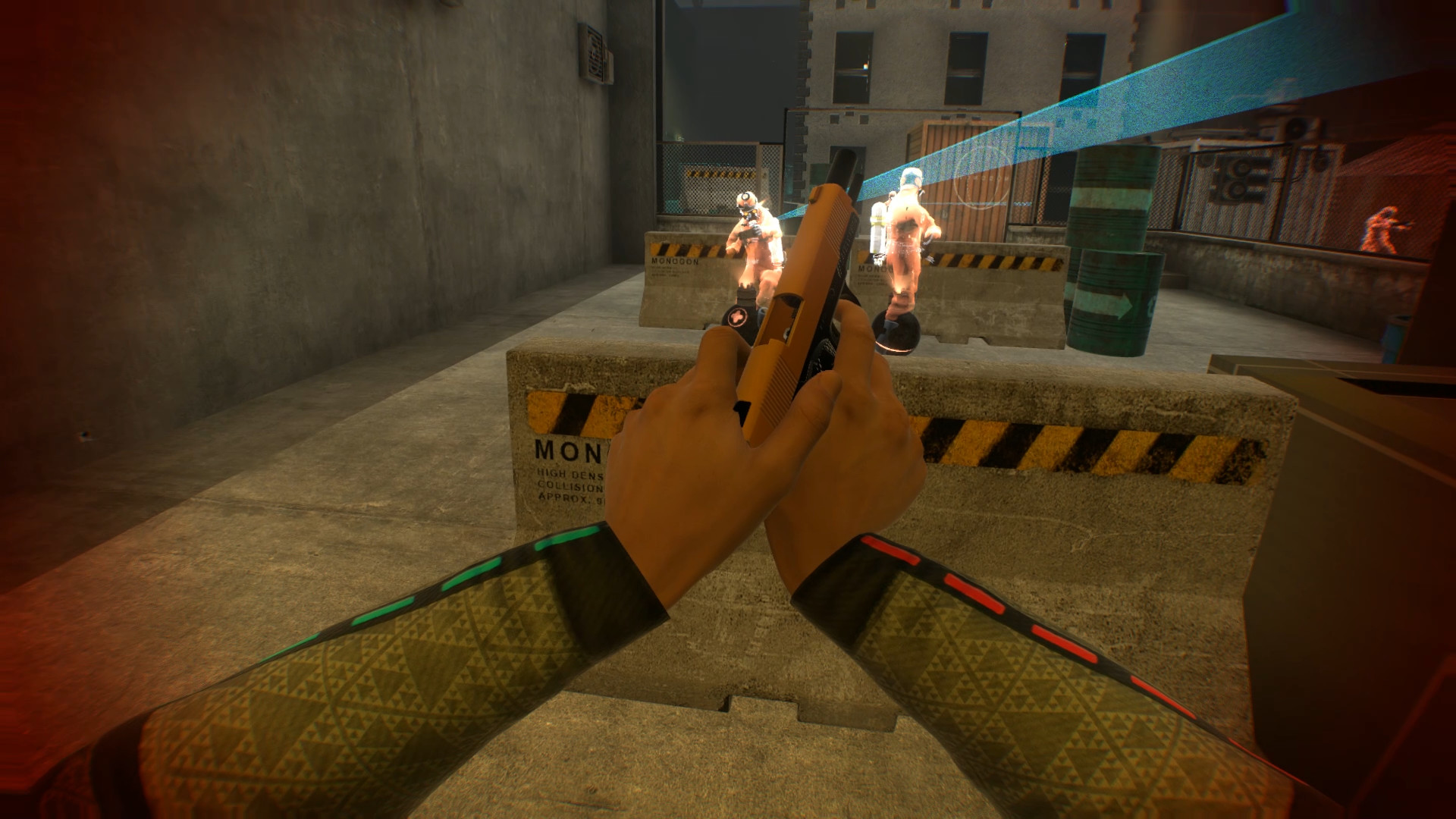
Intensity – 4/10
Boneworks isn’t an intense physical workout; however, it’s such a paradigm-shifting physics experience we’re going to review it traditionally—on its merits as a VR game—alongside reviewing its fitness potential.
I used the Wahoo TICKR Bluetooth heart rate monitor to track my play.
Boneworks vs OrbusVR: Reborn (Runemage)
Calories burned: 219 vs 76
Calories per minute: 1.6 vs 2.4
Max heart rate: 135 vs 94
Active Minutes: 220 (5 mins Cardio 0 mins Peak) vs 32 (0 mins Cardio 0 mins Peak)
 Not particularly impressive biometrics; however, there is something to be said about the mental intensity involved in traversing the puzzles in this game. It’s one of the more mentally challenging VR games I’ve personally played. Problems often felt stimulating and satisfying once solved, with some of my solutions feeling notably innovative and creative. Other times problems and objects felt glitchy and nauseating, with my head or arm clipping something particularly awful and sending me into a special kind of chaotic virtual hell.
Not particularly impressive biometrics; however, there is something to be said about the mental intensity involved in traversing the puzzles in this game. It’s one of the more mentally challenging VR games I’ve personally played. Problems often felt stimulating and satisfying once solved, with some of my solutions feeling notably innovative and creative. Other times problems and objects felt glitchy and nauseating, with my head or arm clipping something particularly awful and sending me into a special kind of chaotic virtual hell.
Arms – 3/10
Within the first ten minutes of the tutorial I had located a baseball bat, gripped it firmly with both hands, and unleashed havoc on everything in the environment. Nothing was safe from my violence, I smashed it all to bits. I felt glorious. Ten minutes later I’m punching a test dummy; balled fists relentlessly unleashing stress.
You spend the entire game as a set of arms and hands that interact with the virtual environment. The rules governing the game’s physics are simple, natural, and unwavering. This last bit also makes them powerful and convincing. Players immediately trust what they are capable of, never questioning their ability to solve, smash, and shoot their way to victory.
While you are certainly able to use this game as the most immersive and convincing smash simulator for VR ever, there are no puzzles that require you to work hard or employ repetitive arm movements to solve.
Fitness potential aside, for how hyped the physics of the game were, I felt consistently disappointed in how my hands interacted with objects. My grip often felt sticky and letting go of things was frequently a problem. This affected different mechanics in different ways but made climbing and two-handed weapons notably awkward. That being said, I’ve never seen a game handle objects interacting with force so beautifully. Smashing, shooting, slashing, shattering, stabbing—collision as a whole—is all done so well that Boneworks essentially serves to recalibrate the standard.
Legs – 1/10
Boneworks can actually be played standing or seated, which is a great consideration for those unable to be on their feet for long periods of time or at all. It’s also a great consideration for the majority of people who are unable to play the game standing due to it intentionally “pushing the limits of comfort and nausea.”
Aside from walking and standing upright—if you choose this method of play—crouching is the only other leg exertion I faced. While you can crouch in the game by squatting in real life, you can also do it with your controller. On the Index controllers, it’s with the right thumb-stick and is often the most efficient way to handle your legs.
Core and Balance – 2/10
Let’s just say you might want to try Boneworks seated at first to make sure you don’t get dizzy, nauseated, or fall down. I personally preferred playing standing, and feel the game is better and more immersive this way if you’re able to do it. Working your core, keeping it engaged, or improving your balance; however; isn’t something Boneworks offers.
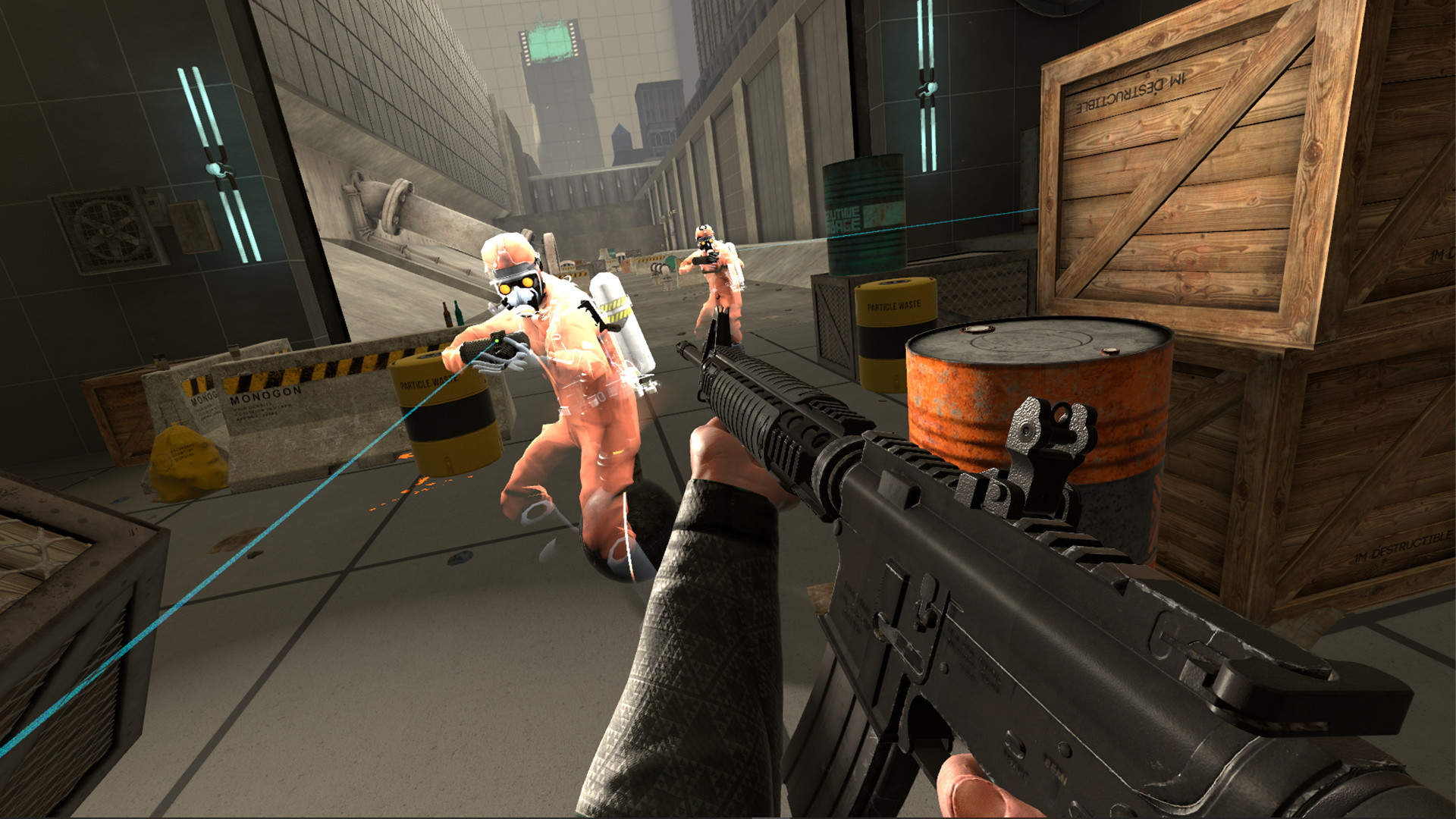
Time Perception – 6/10
The campaign is a robust and full-length experience for even the fastest of puzzle solvers. For those of us that are a little more distractable you can expect to spend a little more than ten hours completing the story. The tutorial took me two hours. Please don’t judge me. While the game’s narrative is linear, how you traverse the details, conflicts, and information collection is not. The lore is delivered mostly in brief videos and graffiti spread throughout levels and often feels like an after-thought.
It was easy for me to get lost exploring secret doors, tunnels, walkways, and hallways; however, this awe and enthusiasm wore off with great haste after having to replay the first level three freaking times. Why? Because I didn’t finish fast enough and the save points are frustratingly far apart. Four hours was as long as I could play before I started getting a headache and based on conversations with others this is considered pretty darn good. This limitation makes losing track of time in Boneworks a bit harder than in other games.
Replayability – 10/10
Puzzles and levels having so many solutions make a replay of the story mode enticing. On top of that, there are Arena and Sandbox modes only available after finding certain objects in the campaign.
Sandbox mode makes the game’s objects and physics totally available to do with as you wish. Arena mode unlocks Challenges, Trials, and Survival, each adding their own special flavor of physics-based pandemonium. Survival is about living as long as possible while Trials introduces restrictions and conditions. For example, you may only have access to a certain type of weapon or lose your ability to regenerate health.
These modes add an additional eternity of customizable content and make replayability one of this game’s strongest features.
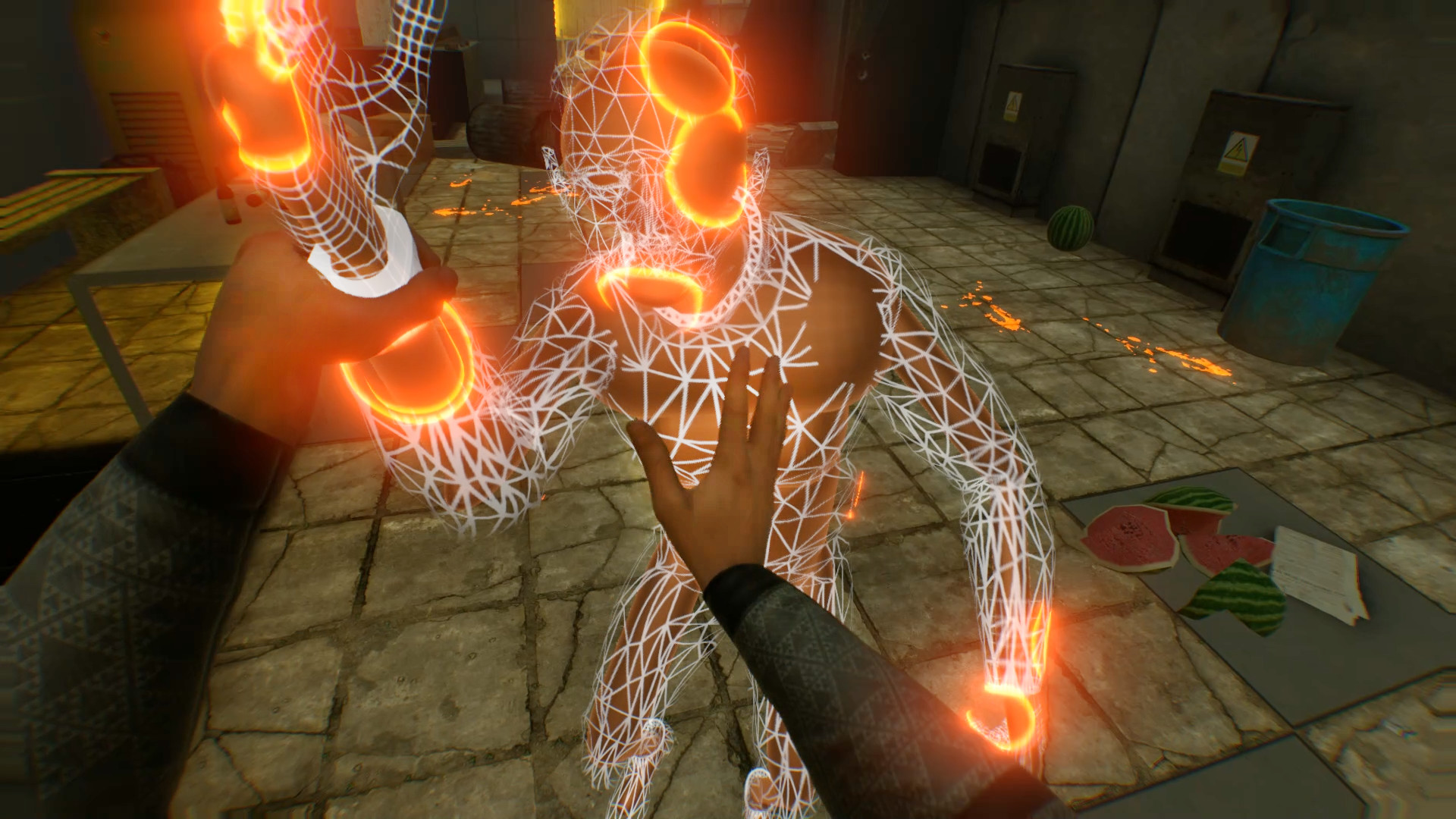
Fitness Scalability – 4/10
I can’t think of any ways to scale exertion natively while playing Boneworks in any of the modes. I tested the game wearing light weights (2.5 lbs on each wrist) and it felt safe from injury which I felt deserved a few points here.
Lack of Nausea – 1/10
The acid rises in my throat simply recalling various vomitous moments while trudging through this title. The game admittedly pushes boundaries and the choice to exclude teleportation was intentional. With only locomotion to move you through levels this game can be impossible for entry-level VR consumers. As someone with thousands of hours in VR, I’m only able to play for four hours before getting a headache. After hearing similar stories from other experienced users, I believe this issue extends well past just “getting good.”
Social Competition – 2/10
Some of the later unlocked modes have arcade-style leader-boards, but outside of that, this is a single-player game.
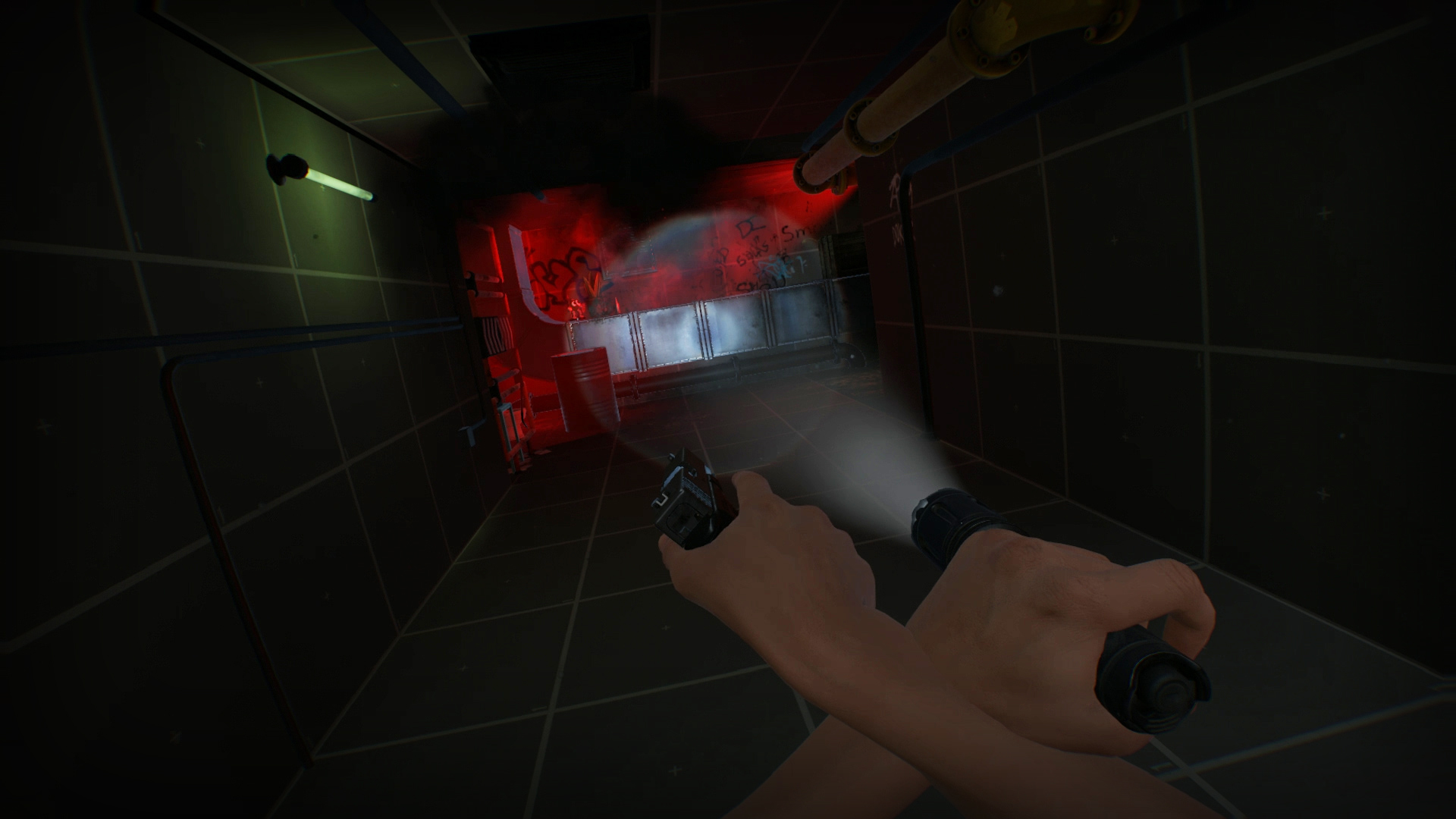
VRFI Fit Score: 3.5/10
VRFI Game Score: 6.5/10
The Good
If you’re a seasoned VR veteran Boneworks could objectively be the best bang for your buck this holiday season. Doubly so if you have the Index, or at the very least the Index controllers. The full-length campaign and additional modes that unlock after completing it will supply you with VR content for months. The employment of consistent physics is breathtaking and sure to set the industry standard from this point forward. Look no further for a shining example of the potential power of physics in VR when harnessed correctly.
The Bad
The game has serious intentional issues with motion sickness that reach far beyond lack of experience. This paired with an inability to save your progress for punishing lengths of time can make the game restrictively impossible. While physics are the main attraction for Boneworks, interacting with objects can sometimes feel sticky, even with the Index controllers. This makes things like climbing or aiming two-handed weapons awkward and at times even un-fun. For those using VR entirely for fitness purposes, this ain’t it chief. It’s an exciting peek into the future of VR for sure, and will act as something for me to do while waiting not-so-patiently for Half-Life: Alyx.
Experience paradigm-shifting physics pandemonium this holiday season with Boneworks on SteamVR.
MSRP: $32.99 USD.

